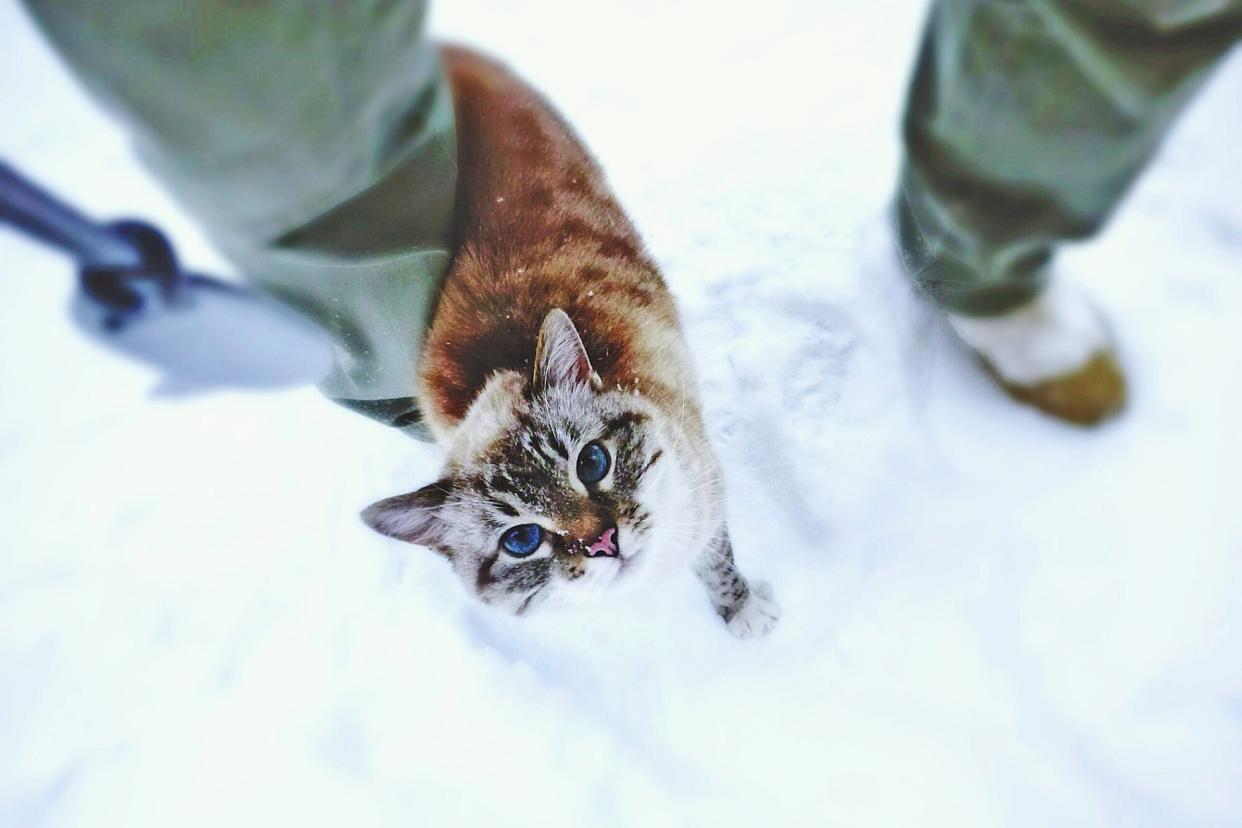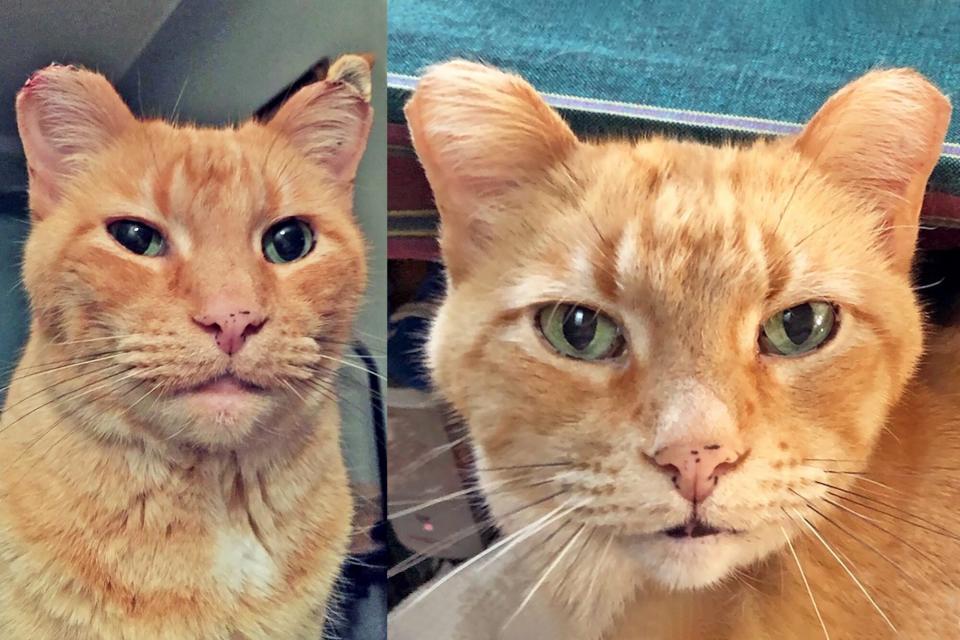How to Recognize, Treat, and Prevent Frostbite in Cats

Anastasiâ Ûskevic / EyeEm / Getty
Frostbite in cats occurs when the body protects vital organs from the cold by redirecting blood flow to the core of the body. This leaves extremities like the paws, ears, nose, and tail vulnerable to freezing, and could result in tissue death.
When Perry Christmas was rescued from the blistering cold, it was apparent he had been in the elements for far too long, Jean Hofve, DVM, co-founder of Little Big Cat recalls of her furry companion who she rescued in December 2018. "His ear tips were turning black when he came to me, and there was a clear line of demarcation between dead and living tissue." Severe cases of frostbite in cats could require surgical intervention, but Perry Christmas's frostbitten ear tips resolved in a different way—they fell off on their own. "Now he looks like a little lion club with his cute little round ears," Hofve shares.
While a serious condition, frostbite can be prevented. Here's how you can prevent, recognize, and seek treatment for frostbite in your cat, and free-roaming kitties like Perry Christmas.
Can Cats Get Frostbite?
Just like you and me, cats (and dogs) can suffer from frostbite and it usually affects smaller body parts or areas less insulated with fur, like the ear tips, tail, and paws. Frostbite can range from mild to severe, with more severe cases occurring in wet and/or windy conditions. Cats with underlying health conditions, kittens, and senior cats are most vulnerable to frostbite, Erin Katribe, DVM, Medical Director of Best Friends Animal Society says. When it comes to cat breeds, hairless cats and short-haired breeds are at higher risk than large, fluffy breeds like a Maine coon at developing frostbite. Hypothermia, or the decrease in core body temperature, can also occur with frostbite, but this doesn't always happen.
Signs and Symptoms of Frostbite in Cats
Frostbite can occur at cold temperatures at or below freezing (32 degrees Fahrenheit and below). Here's how to recognize the signs.
Mild frostbite will feel cold to the touch and be pale or blue in color. At this stage, the affected appendages may recover with warming. "Warming of appendages can be done by applying warm water," Katribe says, "but a veterinarian should evaluate for additional treatment." As the skin warms, it could become red and inflamed and be painful to the touch.
Severe frostbite may be blue in color, progressing to black. At this stage, the tissue is most likely dead and could require surgical amputation by a veterinarian. In other cases of severe frostbite, like Perry Christmas, the tissue will begin to slough and eventually fall off. This process could take a week or more after the initial exposure and it's not uncommon for pus or a foul odor to develop during this time.

Courtesy of Jean Hovfe, DVM
How To Treat Frostbite in Cats
If you believe your cat or a free-roaming feline has frostbite, veterinary treatment is recommended. Until you can seek veterinary care, you'll want to move your cat into a dry, warm location to get her body temperature up. If she's shivering, wrap her in a dry towel or blanket, avoiding rubbing any frostbitten appendages. As previously mentioned, warm water or a warm compress (not hot) can be applied to the affected areas, slowly and gently warming frostbitten toe beans, ears, tail, and other at-risk areas. Warming should only be done indoors to prevent refreezing.
RELATED: The 13 Best Heated Cat Beds
Only your vet can determine if surgical intervention is needed. If your cat shows signs of pain, ask your vet about pain medication, and never give human medication without prior direction from your vet. If the affected tissue begins to die (turn black) and pus or a foul odor develops, your vet may also prescribe antibiotics.
How to Prevent Frostbite in Cats
"If it's too cold for you outside, then it's likely too cold for your furry companion, so play it safe and stay indoors," Katribe recommends. But if your cat loves playing in snow, consider dressing her in winter-appropriate gear like a jacket, sweater, or a protective layer of paw balm or Vaseline. Usually, dogs are more tolerant of clothing. So if you have a finicky feline that refuses a stitch of clothing, try a cozy walk in a pet stroller or backpack with blankets, Katribe says.
If you're wondering how to prevent frostbite in your favorite free-roaming neighborhood kitty, there's a solution for that too. We've taken the work out of house hunting and rounded up the nine best outdoor cat houses to keep every kind of kitty safe this winter—and next.
RELATED: 6 Tips to Keep Pets Safe During Extreme Winter Weather

